|
풀 메탈 자켓: 그 겨울의 시작 (Full Metal Jacket: Geu Gyeoul-ui Sijak) - PC-DOS (February 1996)
|
|
아마게돈: 혼돈 속으로 (Armageddon: Hondon Sog-euro) - PC-DOS (January 1996)
|
|
카트 레이스 (Kart Race) - PC-DOS (1996)
|
|
으라차차 (Eurachacha) / Eracha - PC-DOS (April 27th, 1996)
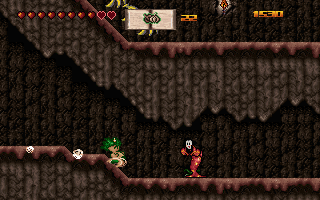
Eracha
|
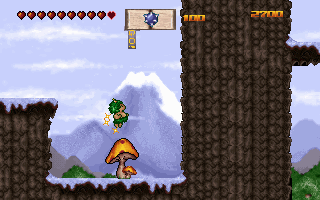
Eracha
|
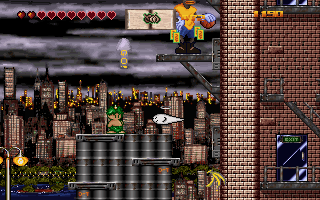
Eracha
|
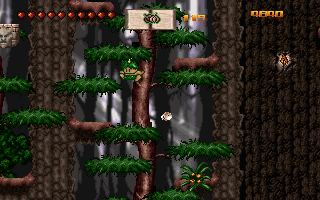
Eracha
|
|
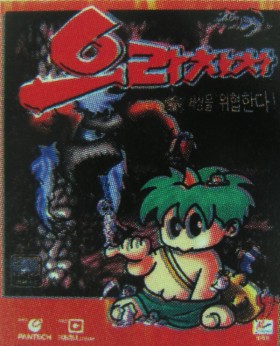
Korean Cover
In this cutesy platformer a little Korean troll travels around the world to save his tribe. The stations on his journey are China, Japan, Transilvania and the USA, and in every location he has to deal with local horror creatures and cultural stereotypes. Besides a club as his standard weapon, he also collects several different projectiles. And there's his secret weapon: It is possible to have the protagonist pee on the floor, which in special places leads to accelerated fungal growing. The mushrooms can then be used as trampolines to reach new heigths.
The stages are long and fairly often branched out into these secret places, while the controls and QA are also worlds better than in Apachacha. There are a few strange design decisions (why is it possible to pick up different types of ammunition when they all add up to the same pool, anyway?), but overall Eracha is a very solid and fun platformer. The game, which was developed with the help of some Makkoya employees, was also released in Germany and the UK.
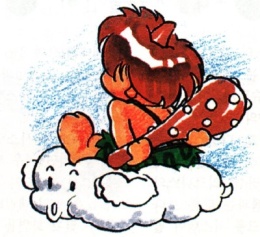
|
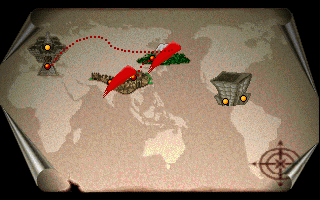
Eracha
|
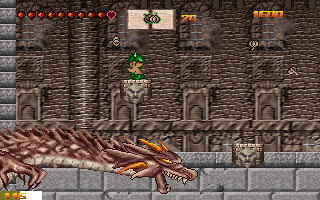
Eracha
|
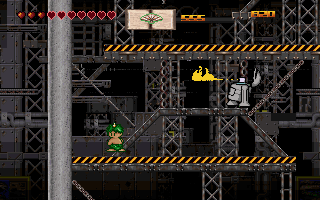
Eracha
|
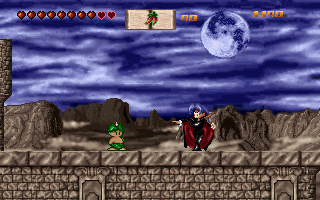
Eracha
|
|
|
|
폭풍 속으로 (Pokpung Sok-euro): Eden too Far / Into the Storm - PC-DOS (May 10th, 1996)
|
|
나무꾼 이야기 (Namukkun Iyagi) - PC-DOS (May 1996)
|
|
고룡전기 퍼시벌 (古龍戰記 퍼시벌 Goryong Jeon'gi Pursival) / Legend of the Ancient Dragon - PC-DOS, Windows (June 1996)
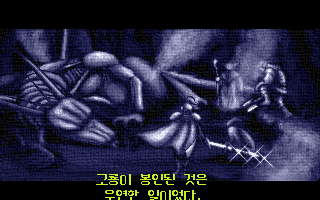
Legend of the Ancient Dragon
|
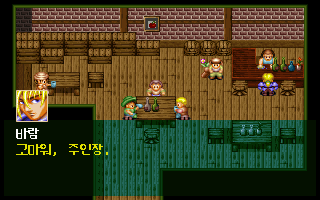
Legend of the Ancient Dragon
|
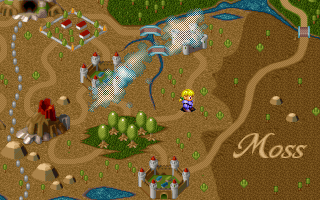
Legend of the Ancient Dragon
|
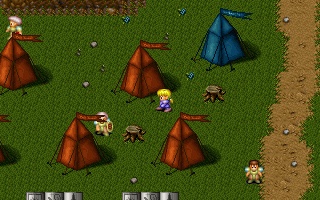
Legend of the Ancient Dragon
|
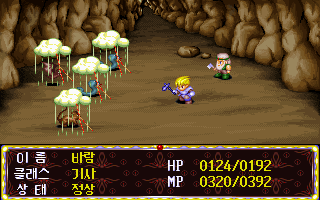
Legend of the Ancient Dragon
|
|
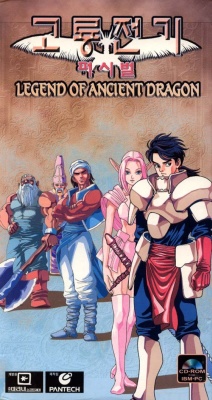
Cover
|
After Mirinae's competent first entry into the RPG genre, this one comes as quite a surprise. Everything in it is inferior to the two years older game. The scenario is a generic medieval fantasy melange exercised a thousand times before. In fact, it holds a tad too many similarities to Record of Lodoss War. The battle system is deeply flawed, most doors in dungeons make no sense at all (when going back to the same door, the party more often than not appears in a wholly different place than before) and it has got its fair share of glitches as well.
Incomprehensibly, this game of all the Korean RPGs was chosen to be the first that got translated into English (quite badly) and released in the USA. But it wasn't enough to chose an inferior game, apparently publisher JC Research felt the need to release the game for Windows, so Mirinae shelled out an unfinished port with several new bugs, test version hotkeys intact and the common compatability issues early Windows games show on more recent machines. Worst of all, Choi Jongyeop's music, about the best part of the game, is completely missing from the Western release versions for no apparent reason (the program is even ready to play the soundtrack, it's just not on the CD). Needless to say, this carelessly crapped out release totally bombed.
|
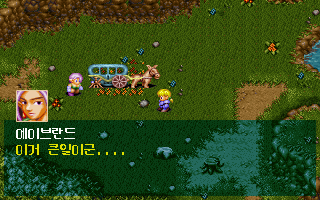
Legend of the Ancient Dragon
|
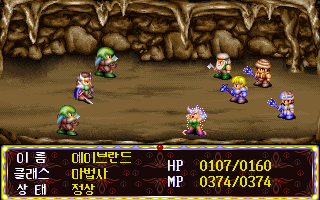
Legend of the Ancient Dragon
|
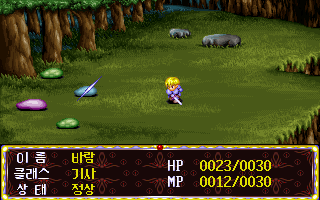
Legend of the Ancient Dragon
|
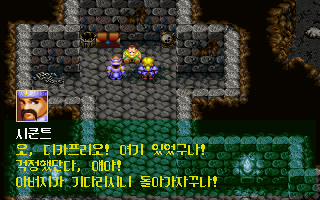
Legend of the Ancient Dragon
|
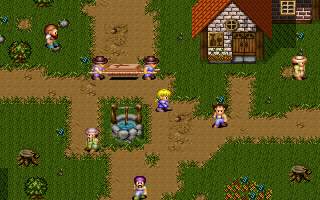
Legend of the Ancient Dragon
|
|
|
|
배틀기어 (Battle Gear) - PC-DOS (August 1996)
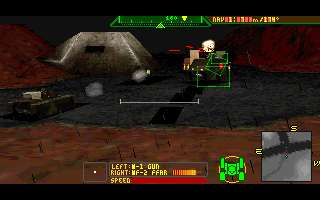
Battle Gear
|
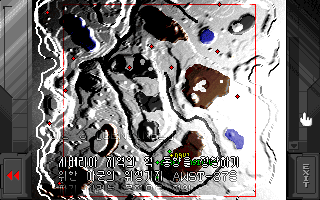
Battle Gear
|
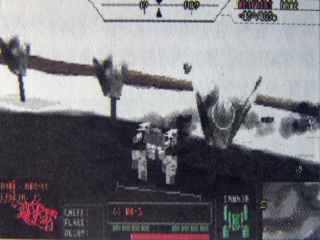
Battle Gear
|
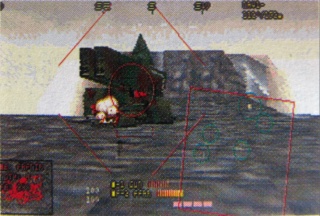
Battle Gear
|
|
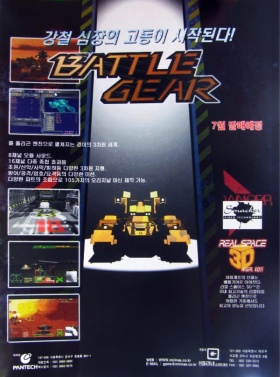
Advertisement
This 3D mecha game seems to bee more simulation-heavy compared to the more action oriented Full Metal Jacket series, though not to the degree of most Western mecha simulations at that time.
Like in Mirinae's 2D games, each of the 19 mission begins with equipping the mecha. Only this time the process is much more elaborate, as machine is composed of individual body parts. In addition to the various weapon systems, the player can also send out foot soldiers to do certain tasks, but has to take care not to squash them. At the time of the game's release, it was hailed for its impressive technological performance, unseen in any Korean developed game before, but the enemy AI has been criticized for a flaw that makes it possible to cheat it, as it doesn't react on a player that attacks with missiles from extremely far away.
A PSX version was originally planned as well, in cooperation with a Japanese company called Infiny, which specialized in porting western PC games to 32-bit consoles4. Unfortunately, that project never came to fruit.
|
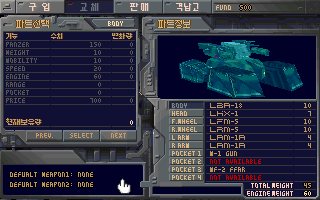
Battle Gear
|
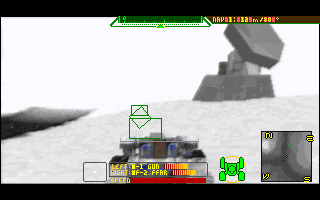
Battle Gear
|
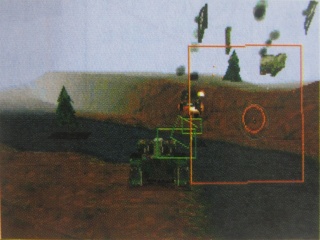
Battle Gear
|
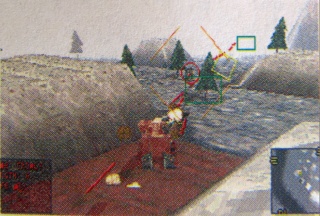
Battle Gear
|
|
|
|
풀 메탈 자켓 2 (Full Metal Jacket 2) - PC-DOS (November 1996)
|
|
드라곤 투카 3D (Dragon Tuka 3D) - PC-DOS (January 1997)
|
|
네크론 (Necrons) - PC-DOS (February 1997)
|
|
작은 신들의 전쟁 (Jageun Sin-deul-ui Jeonjaeng) / Kid God Fighters / Super Kid - PC-DOS (February 1997)
|
|
칸 온라인 (Khan Online) / Khan: The Absolute Power - Windows (May 1th, 2003 [open beta])
|
그날이 오면 (Geu Nal-i Omyeon) (1989)
남벌 (Nambeol) (1994-1997)
운명의 결전 II (Unmyeong-ui Gyeoljeon II) / Fight of Destiny 2 (1996)
그날이 오면 6 (Geu Nal-i Omyeon 6) (1996)
낚시 마당 96 (Nakksi Madang 96) (1996)
지옥의 장 (Jiok-ui Jang) / Symbol of F.AT.MA: Another Story of Ancient Dragon (1997-1998)
Multi-War (1997)
Virtual-Office (1997)
|